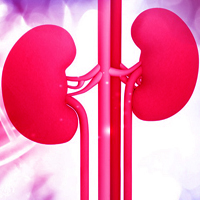Evaluation of serum levels of iron, total iron binding capacity, transferrin saturation and ferritin in chronic kidney disease patients vs. control group

All claims expressed in this article are solely those of the authors and do not necessarily represent those of their affiliated organizations, or those of the publisher, the editors and the reviewers. Any product that may be evaluated in this article or claim that may be made by its manufacturer is not guaranteed or endorsed by the publisher.
Authors
The magnitude of chronic renal disease is enormous, as the prevalence of kidney failure is rising. Anaemia is a common complication of chronic kidney disease (CKD) that develops early in its course and becomes increasingly severe as the disease progresses. The aim is to evaluate the serum level of iron, Total Iron Binding Capacity (TIBC), transferrin saturation and ferritin in chronic kidney disease population in Zaria and control subjects. This study was conducted at ABUTH Zaria were 125 patients in various stages of CKD who presented at the nephrology clinic and equal number of apparently healthy age and sex matched controls were recruited. The mean (SD) age of patient and controls were 48 (14) years. These were made up of 53.6% males, and 46.4% females. Mean values of serum creatinine significantly higher in the patients (<0.0001). There was no significant difference in the mean values of iron (p=0.32) and TIBC (p=1.29) in both study groups. The patients had a significantly (p˂0.0001) higher mean value for ferritin and TSAT than the control group. There were higher serum creatinine and ferritin values in males than in females while higher serum TIBC, estimated creatinine clearance and iron were observed in females than males. Serum creatinine, ferritin and estimated creatinine clearance of male patients were found to be significantly higher with p-value of 0.002, 0.000 and 0.028 respectively than that of female patients. No significant differences were noted in serum levels of iron, TIBC and TSAT. Serum creatinine, ferritin and TSAT were found to be significantly elevated in CKD patients while serum Iron and TIBC were not.
How to Cite
PAGEPress has chosen to apply the Creative Commons Attribution NonCommercial 4.0 International License (CC BY-NC 4.0) to all manuscripts to be published.

 https://doi.org/10.4081/aamr.2019.101
https://doi.org/10.4081/aamr.2019.101



